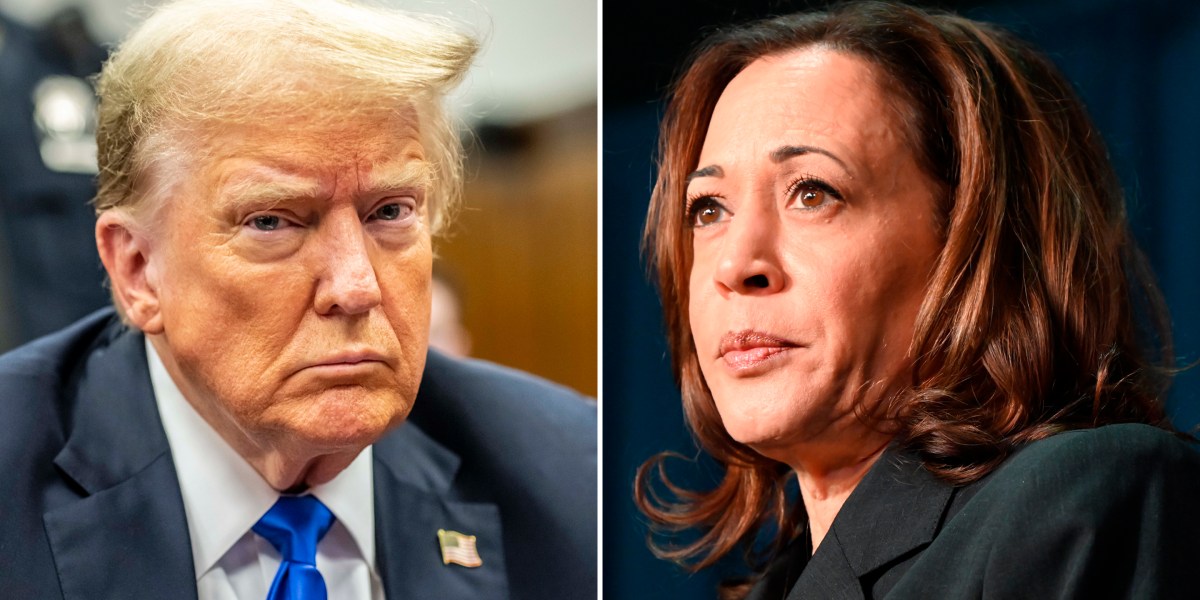
Until recently, we didn’t know much about Kamala Harris’s housing policy. We knew she went toe-to-toe with Jamie Dimon over a settlement for homeowners post-Great Financial Crisis and won, during her time as California’s attorney general; and we knew she proposed the Rent Relief Act during her time as senator, which was very Californian of her. Then there’s Donald Trump, a once real-estate scion who you may assume was all for deregulation, only it’s not totally clear where he stands on housing, either.
The economy matters in an election year. But the economy is fine on paper, and yet people still feel as if it isn’t. Housing could be why: People can’t afford to buy homes. It’s high home prices, high mortgage rates, and everything in between. So even if policy matters cascade down from governors to mayors to wealthy neighborhoods, presidential administrations can influence it all.
Kamala Harris on housing
On Friday, Vice President and Democratic presidential nominee Harris revealed her plan for the housing world. From calling for the development of three million homes via tax incentives for builders who build starter homes and affordable rentals, a $40 billion federal fund to build homes, the repurposing of some federal lands, and cutting the red tape—it’s all there, and more. On the campaign trail, she vowed to end the country’s housing crisis, fueled by a shortfall of homes. “By the end of my first term, we will end America’s housing shortage,” Harris said in North Carolina, the day she shared her economic plan.
Harris’s housing plan looks “a lot like what I would write down as a wish list for addressing housing affordability in this country,” Michael Lens, a professor of urban planning and public policy at the University of California, Los Angeles, told Fortune. “It leads with the obvious long-term culprit: zoning and land-use barriers.” Still, details are light on how she plans to get localities on board, or how she’ll deal with policies that, for decades, have made it so difficult to build housing in certain parts of our country.
Not to mention, California alone needs to develop two and a half million homes by the end of this decade, according to Gov. Gavin Newsom’s office. So three million homes across the country by the end of her first term (close to the end of the decade) might not be enough, but Lens called her priorities “obvious and appropriate.”
While Harris’s proposals can be understood as mechanisms to enhance supply, they aren’t the sole basis of her plan. For one, she wants to take on corporate landlords, something she’s said in prior campaign events. The thing is, Wall Street can’t be totally blamed for the country’s housing crisis. There are, of course, metropolitan areas where the presence of institutional landlords is more prominent and can be a problem, but Lens suggested her interest in corporate landlords is less evidenced-based and shouldn’t necessarily be her greatest concern. Bryan Caplan, a professor of economics at George Mason University and the author of “Build, Baby, Build: The Science and Ethics of Housing Regulation,” wasn’t a fan of her scapegoating of corporate landlords, calling it “very bad.”
On another front, Harris proposed up to $25,000 in downpayment assistance for first-time homebuyers, but people seem split on this idea. Jenny Schuetz, a senior fellow at Brookings Metro, whose research focuses on improving housing and land-use policies, explained that “tackling the housing shortage is essential for bringing down prices and rents, but increasing supply takes time. Providing assistance to first-time homebuyers can help in the meantime.” Caplan, on the other hand, said “the measures designed to boost demand are counter-productive,” but the consensus is that her attention to supply is critical.
Donald Trump on housing
Four years ago, Trump and Ben Carson, his Secretary of Housing and Urban Development, wrote a commentary in the Wall Street Journal titled: “We’ll Protect America’s Suburbs.” In it, the two condemned abolishing single-family zoning and the development of high-density apartments in residential neighborhoods. He was called a NIMBY then (a member of the not-in-my-backyard crowd), and is still called that. At a campaign rally in May this year, Trump, when he was still running against President Joe Biden, said he’d stop Biden’s “sinister plan to abolish the suburbs.” But in an interview with Bloomberg, Trump called zoning “a killer.”
“It’s not super clear where he actually lands,” Schuetz said, adding Trump can’t punish blue cities with strict regulations while protecting suburbs and allowing them to keep their exclusionary practices. “Are you more concerned with protecting state and local autonomy? Are you more concerned with protecting single-family zoning? Because those don’t always go hand in hand.”
Both Lens and Caplan echoed Schuetz, in that Trump seems to be all over the place when it comes to housing. Republican politicians are typically the people who push for deregulation; red states generally build more homes than blue states and rarely have housing crises as severe, if at all. Trump may not be wholly anti-development, but his rhetoric on protecting neighborhoods seems to suggest he’ll deploy the same tools that have been used for years to do so, Lens pointed out.
“Carson and Trump certainly seem to rhetorically side more with a protectionist, regulatory NIMBY-ist regime,” Lens said. And it begs the question that a lot of people asked when Trump was first elected: Why Carson? He had no experience in government or housing policy. (Carson happens to be the author of the housing chapter within Project 2025, which Trump has attempted to distance himself from.)
The one thing that pushed Trump ahead of Harris, in Caplan’s mind, is these sort of new cities built by billionaires. Caplan called it “a long-shot,” but still sees it as more likely with Trump. Nevertheless, in that same Bloomberg interview Trump said, the “biggest problem with housing,” at this point is interest rates. Mortgage rates are a problem, but they’re a temporary one.
Whoever and whatever comes next, will need to deal with housing, even if they can’t fix everything all at once: Mortgage rates soared from their pandemic-era lows in such a short period of time, home prices pushed through all-time highs, all the while, incomes haven’t kept up—and we’re missing millions of homes. It’s a problem.















